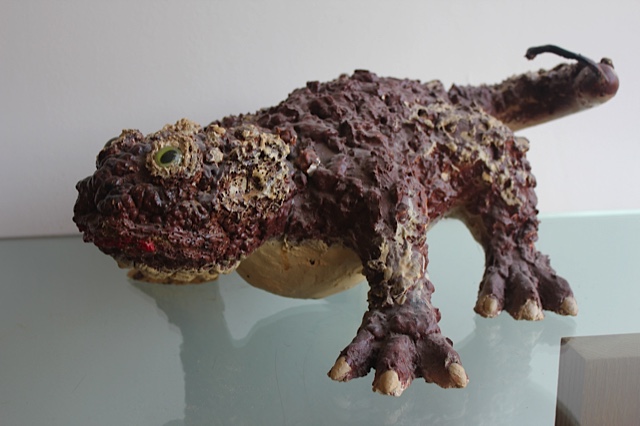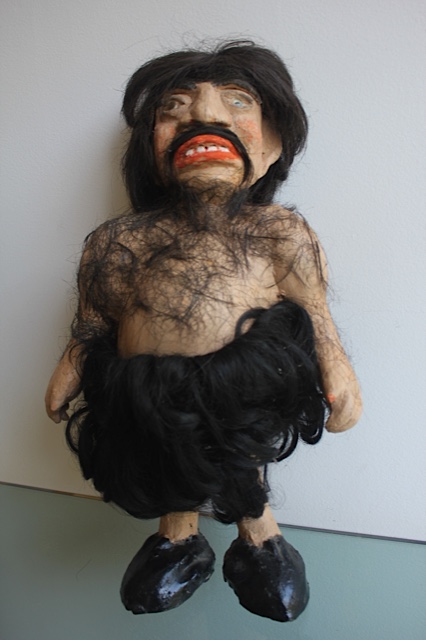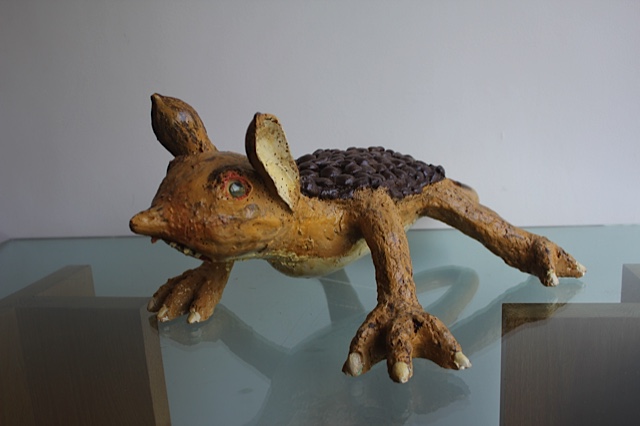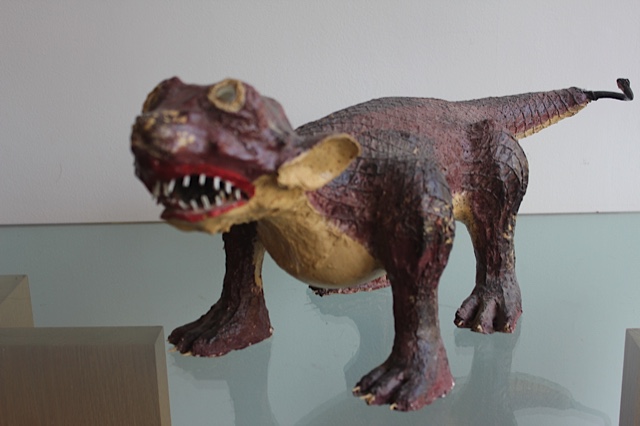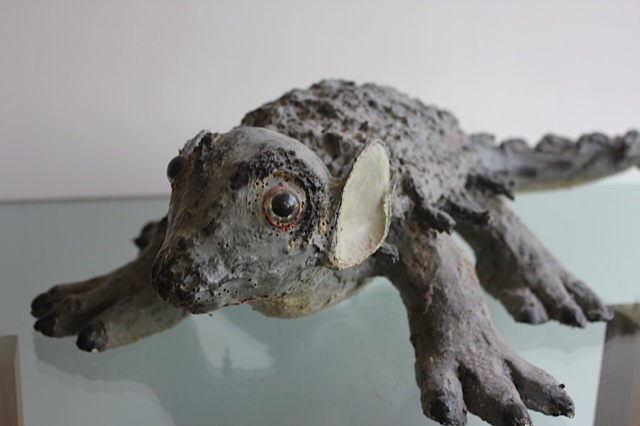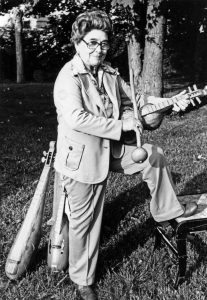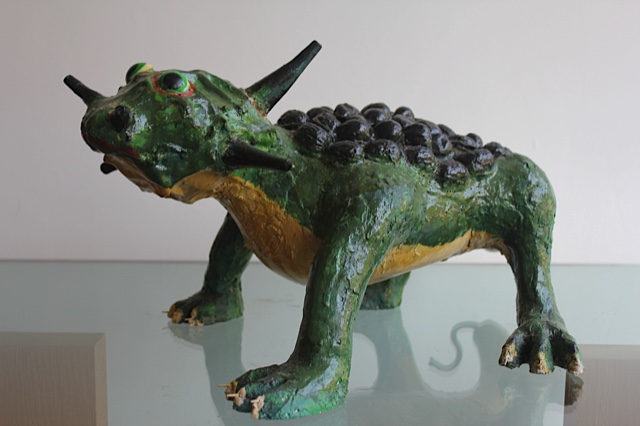
Green Horned Creature
Brown Animal with Green Eyes
Cave Man
Ochre Animal
Brown Animal
Gray Animal
Comes from Laurel County, Kentucky. She creates wonderful objects, mostly fantasy animals and other creatures, from the gourds she grows on her property, and she displays them in her Gourd Museum next door to her house. She also makes musical instruments using her gourds. Minnie Black is often written about, and her work may be seen in a film and museums. Her home is in East Bernstadt, Kentucky. She welcomes visitors, but asks that one please telephone first” because at my age you just never know” She is listed in the directory. (In 1991when Minnie Black was only ninety‑two, three persons far younger—including the author —arrived exhausted on a hot June day to find her hoeing in her large backyard garden.) She does sell a few “extra pieces” from her Gourd Museum, and occasionally a piece will make its way into a Kentucky gallery.
MINNIE BLACK I enjoy it. I like to please people and myself “
Born Minnie Lincks, February, 18, 1899, five miles north of London, Kentucky. Attended Annville Institute, Annville, Kentucky, for eight years; spent one year at Sue Bennett College (a training school for teachers), London, Kentucky. Married William Black, September 15, 1919; he died April 8, 1973. Three sons, one daughter. Now resides East Bernstadt, Kentucky.
Minnie Black has made an art of turning ordinary gourds into unusual sculptures and musical instruments.
As a youngster, the eighth of twelve children, Minnie Black “always had plenty to eat and do” on the Arm where her father raised the best grade of beef. Her education went as far as normal school but then she had “marryin’ ” on her mind.
“Being a teacher was the best job a girl could have,” Black says of her early life. “I wanted to be a teacher but I married—so l couldn’t.” Black’s husband, William, was a railway agent; he ran a depot for the Rockcastle Railroad, and when the depot closed, he opened a grocery store and gas station in East Bernstadt, Kentucky.
When William retired in the late 1960s, Minnie Black turned the white concrete‑block grocery store into “Minnie Black’s Gourd Craft Museum.” She organized a senior citizens gourd band that plays gourd instruments of her making—mandolins, lutes, shakers, bells, drums, and kazoos. Her work was displayed at the World’s Fair in Knoxville, Tennessee.
Minnie Black claims that her work with gourds was strictly fortuitous: “In 1947 a stray gourd appeared alongside my driveway. I had a gourd garden,” she says, ‘ so I just started making things out of ’em. “
Minnie Black’s Gourd Craft Museum opened in the late 1960s and quickly attracted visitors interested in Appalachian crafts. Her art is also displayed at John Rice Irwin’s Museum of Appalachia in Norris, Tennessee.
Dodo birds with chicken feet, prehistoric and fantastic ammals, snakes, and occasionally the artist herself. “When I see a strange‑looking animal in the papers or magazines, when I see a politician like Nixon, when I see TV characters, I can usually find that person or animal in the shape of a gourd and make it.” She also uses National Geographic magazine as a source of ideas.
Black picks her gourds from her garden, cuts them with a knife, and nails them together with fine nails. She then skins the gourd and dries it for months. She uses a commercial product, Sculptamold, to cover the joints and to add features.
Black keeps the natural color of the gourd, adding paint only to hide joints. She adds eyes that are used for stuffed animals and frozen chicken feet for her dodo birds. Her largest work stands 3 feet tall, but most are no higher than 15 inches. Black estimates that she has made about five hundred pieces.
The gourds are fragile, but Black advises that “if one is broken, it can be mended with glue and Sculptamold. “
Minnie Black’s work straddles the thin line between craft and art. Her characterizations of people and her animals stand alone as artistic endeavors; her musical instruments are craft. She has sold very few of her works, preferring to keep her museum together. Although her work is well known among regional collectors, it has been included in only a few museum shows. Black, however, has gained some national attention—she has appeared on television on the Johnny Carson and the David Letterman shows.
Additional Links:
